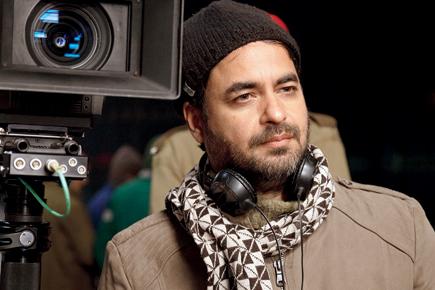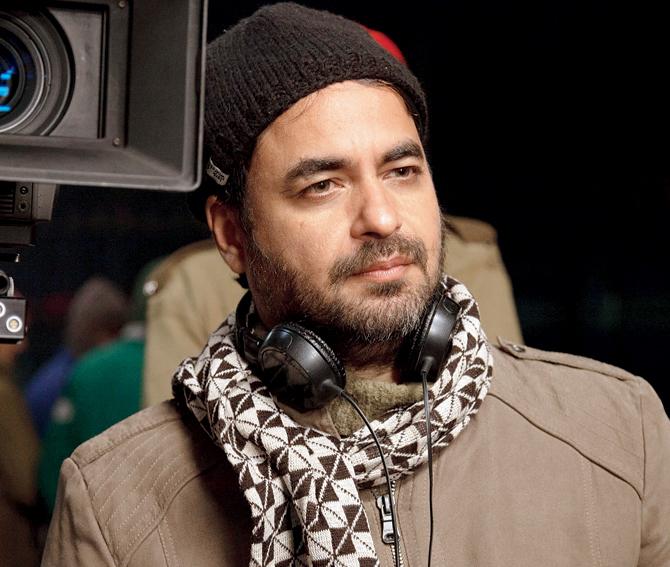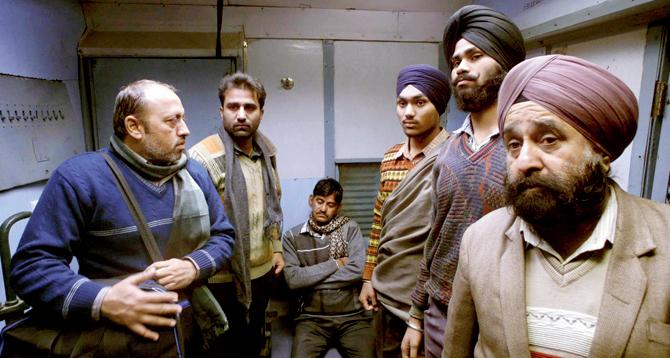Says Gurvinder Singh, whose second film Chauthi Koot will be screened in the Un Certain Regard section at Cannes Film Festival this Friday. In a freewheeling chat with Ananya Ghosh, the director talks about his film set in post-Blue Star Punjab, why he prefers to work with non-professional actors, and finding inspiration in works of Ritwik Ghatak and Robert Bresson

Gurvinder Singh
His debut film, Anhey Ghorhey Da Daan (2011) got him the Golden Peacock award at the International Film Festival of India and the National Award for best direction. And now, Gurvinder Singh’s second film Chauthi Koot (The Fourth Direction) has made it to the Un Certain Regard section of this year’s Cannes Film Festival, which is starting this Wednesday. The film is co-produced by Kartikeya Singh and Sunil Doshi in India and Cath-erine Dussart in France along with NFDC and shows how the common man is caught in the crossfire between militants and state violence especially in the aftermath of Indira Gandhi's assassination.

Gurvinder Singh
ADVERTISEMENT
Q. How does it feel to have your film selected in the Un Certain Regard section?
A. It is as if a baby has been delivered and now it will grow its own natural growth. The film will leave my hands and wander in multiple directions. And there couldn’t have been a better platform than Cannes to start off this journey.
Q. Operation Blue Star has always been a sensitive topic. Are you expecting any kind of controversies/protests back home?
A. The film does not revolve around any political figures. It is set in the ’80s and talks of the mistrust between ordinary people and fear of everyday situations. Such situations prevail even today and that is why I am hoping that the film will resonate with the world audience. The film does not take any sides or get into the blame game. Its approach is humanistic, similar to Anhey Ghorhey Da Daan, where you can find an oblique criticism of the upper castes and the search for dignity for those living on the fringes. Nobody will find anything partisan in the film to stoke fires of protest or calls for ban, which has become an everyday occurrence now in our increasingly intolerant society. Being an artiste has become a risky occupation today.

A still from Chauthi Koot
Q. For Anhey Ghorhey Da Daan you had adapted a novel by Gurdial Singh and Chauthi Koot is based on Waryam Singh Sandhu’s short stories titled Chauthi Koot and Hunn Main Theek Haan. How difficult it is to adapt an existing text?
A. A literary text proposes the events, people and spaces as abstracts and a reader needs to imagine them. Literature is descriptive, whereas cinema is the instance suggested through images and associated sounds. There is a complex polyphony in which they arrive at you. Unlike literature, here you can haunt the memory of the viewer, as there is no escape for them. This transformation from the imaginary to concrete imagery is exciting and challenging. Once I start shooting I forget the written word. The space and the people around me become my material and the film takes off into a different realm from thereon. Anhey Ghorhey Da Daan moves back and forth between the village and the city, continuously shifting the point of views. In Chauthi Koot, though both the stories were complete in themselves, they evoked a similar feeling of fear through a public space and a personal space under siege between the warring sides. My idea was to evoke this sense of insecurity, which permeates spaces and minds in such troubled times.
Q. Unlike the Partition, and the Kashmir issue, Operation Blue Star has not got too many mentions in films. Do you think it has anything to do with the role of the Gandhis?
A. Chauthi Koot was sanctioned by the NFDC during the previous regime. I don’t think it’s got to do anything with regime change. Perhaps it requires sufficient distance from events to reflect on political and social turmoil. Everyone knows that Operation Blue Star was a blunder by Indira Gandhi. There are no two opinions about it. But the state continues to be at war with its own people in different pockets through various sieges — overt and covert, direct and indirect. The Indian state has the dubious distinction of being a facilitator and a repressor at the same time. I am interested in exploring this dichotomy. And you will find this in both my films, simmering under the surface.
Q. That is my next question. Although the two films deal with very different stories—one with industrialisation and the other the aftermath of Operation Bluestar, both are essentially about how the bigger socio-political issues affect the common man. Was it a conscious decision?
A. Perhaps the underlying theme is the state repression and how a section of people are mere pawns in political stakes, all guided by a hunger for control. The state policies create conflicts and then it puts its machinery, political-economic and military, at war with them. In a multi-party democracy where you can form a government with just 30 per cent votes, there is a vested interest in keeping this ferment alive, pitting people against each other along socio-religious and economic lines.
Q. You seem to know these villages and its people too well. What kind of research went into these?
A. I grew up in Delhi, amidst the Punjabi migrants from West Punjab and there was no close association with what was left of Punjab in India. The only way I could have connected with it was going into its interiors and alleys. I travelled extensively through Punjab for four years after graduating from FTII, documenting its folk ballads and oral narratives. That connected me with the language, space and the social realities. The Punjab I saw was unlike what popular cinema or media projects, which is peopled with actors with fake beards.
Q. Why did you choose to work with non-professional actors? How difficult was to shoot with them?
A. My first instinct was to put those real faces that I encountered during my journey on the screen. That did half the job in the first film. There was a sense of ease and absolute comfort in working with them that made it possible. While filming I have completely done away with the idea of characterisation based on psychology or characters’ past. I don’t even rehearse. Once I am convinced of the faces, I put them in the cauldron and ask them to react. Having said that, I have nothing against professional actors. If I find an actor whose face clicks for a character, I have no problem casting him or her. In fact, most of the actors in Chauthi Koot are theatre actors from Amritsar. Then there is the question of language. Even if I were to cast a Punjabi actor from Mumbai, the accent will not be right or they will not be able to improvise the dialogues. Only if they live the language will they be able to do that.
Q. Your first film had late Mani Kaul as its creative producer. How has he influenced your cinema? Apart from him, whom would you call the greatest influence?
A. If I can say, I am from the gharana of Ghatak whom I consider as my grand-ustad! Mani Kaul studied under Ghatak in the same space, the FTII, where I spent some time with him as his teaching assistant. I am trying to find my own voice and imbibe both Mani and Ghatak in my filmmaking. Mani made me realise that what I perceived as my shortcomings were actually my strength and originality. Without this realisation, I would have been stuck trying to be what I am not. He brought me closer to my ‘swabhaav’ or nature. There have been a lot of other influences on the way, from Robert Bresson to Abbas Kiarostami. I owe a lot to these two the way I am working with actors and understanding the interplay between image and sound.
Q. Do you think films like these are finally being able to find the right balance between parallel cinema and the commercial?
A. There are a lot of middle of the road films, neither commercial nor artistically robust. Most filmmakers are trying to fit into an idiom and succumbing to the pressure of financiers and that’s always been the case. I don’t see a film’s worth in terms of its immediate financial success. Genuine cinema will linger on and find its audience for years to come. It will be seen and read differently by successive generations. And that is possible only if it is true to the time and space in which it is made.
Q. With Indian independent cinema gaining international recognition, is it becoming easier to arrange funds and international collaborations?
A. Yes, today, international co-productions are opening up avenues for independent filmmakers and they can work without pressure of compromising on their artistic integrity. However, it’s a very minuscule number. We need more daring producers who have faith in the filmmaker.
 Subscribe today by clicking the link and stay updated with the latest news!" Click here!
Subscribe today by clicking the link and stay updated with the latest news!" Click here!







